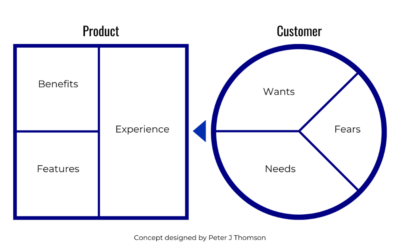Marketing Metrics for Architects
Establishing marketing metrics is crucial for a successful marketing strategy for your architecture firm. You will be more confident about investing your resources when you identify the metrics you use to define success.
Tips for Defining Your Key Performance Indicators (KPIs)
Key Performance Indicators (KPIs) are the metrics you use to track progress. You can have KPIs for your entire business or specific areas such as marketing.
Here are a few tips to set you up for success:
- Define Your Goals: Before selecting the metrics you will track, set clear marketing goals that align with your company’s overall objectives.
- Set Measurable Goals: Define specific, measurable, attainable, relevant, and time-bound (SMART) goals.
- Establish a Baseline: Once you determine the metrics you will track, determine your current performance to compare it to your progress later.
- Establish Benchmarks: Look at competitors or industry standards when determining the goals you establish for your metrics.
- Be Consistent: Review your KPIs consistently. Determine a cadence to update and review each metric.
Metrics to Consider
1. Website Traffic and Engagement
Website traffic and engagement metrics gauge how effectively your online presence attracts and engages potential clients.
What to measure:
- Track Traffic Sources: Monitor where website traffic is coming from (organic, social, referrals).
- Analyze User Behavior: Assess user engagement metrics (time spent, pages per visit) to understand interest levels.
- Optimize for Conversions: Use insights to enhance website content and user experience for higher conversions (depending on how you measure conversions).
2. Lead Generation and Conversion Rates
Conversion rates measure the effectiveness of your marketing efforts in converting visitors to leads or clients.
What to measure:
- Set Conversion Goals: Define what constitutes a conversion for your architecture firm (form submissions, clicking a contact button). I have included a section on proposals separately below.
- Analyze Conversion Paths: Track user journeys on your website to identify bottlenecks and optimize conversion paths.
- Optimize Landing Pages: Test and refine different versions of landing pages for better conversion rates. Additionally, you can collect qualitative user feedback by conducting a survey yourself or through services available online.
3. Client Retention and Acquisition
Measuring client acquisition and retention is vital to sustaining and growing your architectural firm.
What to measure:
- Calculate Client Retention: Track repeat clients to calculate retention. Understanding client retention over time can inform process improvement to ensure you are retaining more existing clients. This can be especially useful for residential clients.
- Assess Acquisition Cost: Analyze the cost incurred to acquire new clients versus retaining existing ones. It is also worth analyzing the difference between acquiring a client through proposal-based work versus direct relationships.
- Focus on Relationship Building: Consider using a Customer Relationship Management (CRM) system to keep track of your long-term relationships and ensure you build strong connections with your clients.
4. Social Media Engagement
Social media engagement is one way to measure how your architectural firm interacts with your audience. Social media can build brand awareness, generate leads, and attract potential talent to your team.
What to measure:
- Audience Growth: Keep track of audience growth and analyze the data to understand your target audience better.
- Monitor Engagement Metrics: Monitor likes, shares, comments, and other audience interactions to gauge the success of your content.
- Content Analysis: Evaluate the performance of different types of content to determine your audience’s preferences across various platforms.
5. Proposal Success Rate
Tracking proposal metrics can identify areas for improvement in the submission process, improving results.
What to measure:
- Proposal Cost: Analyze proposal preparation costs to identify areas to improve processes. This information is also helpful in comparing the cost of acquiring clients through other marketing strategies.
- Proposal-Specific Information: Track proposal-specific information can be helpful when comparing multiple projects, potentially uncovering insights about why specific proposals were or were not successful.
- Success Rate: Be curious about why you were or were not selected for a project. What you learn could inform future proposals, or uncover patterns to inform the projects your ideal client and project profile.
Tools for Metrics
A few powerful tools to explore.
- MFA 01: Your Ideal Client. Useful to refer back to.
- Google Analytics. If you don’t already have your website connected to GA4, this should be your number one priority.
- Looker Studio. Sometimes finicky, but overall a useful free tool.
- Zapier. Perfect for the Autodesk Revit and Grasshopper 3D fans at your firm to add a few automations to your marketing.
- Hubspot. Much more than a CRM, and it is expensive, but it is worth a free account and checking out the free resources.
- Traction. About much more than metrics, but worth a read just for that section.
If Microsoft Excel is all you can handle right now, keep it simple! The important thing is that you are consistently capturing a few metrics and using the data to inform your strategy.
Good luck, and as always, reach out if you have questions!





0 Comments